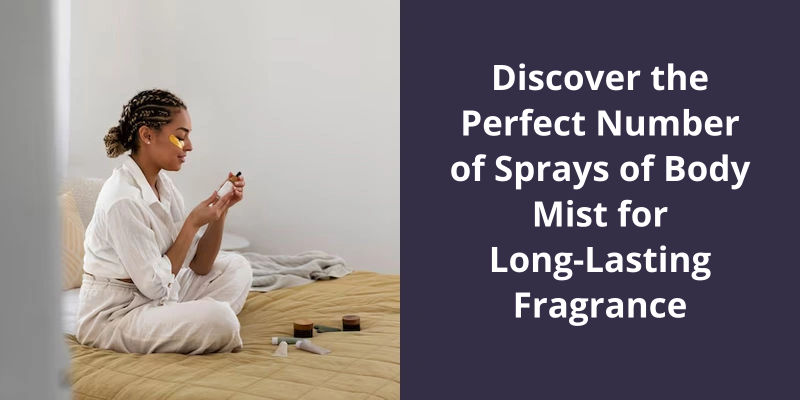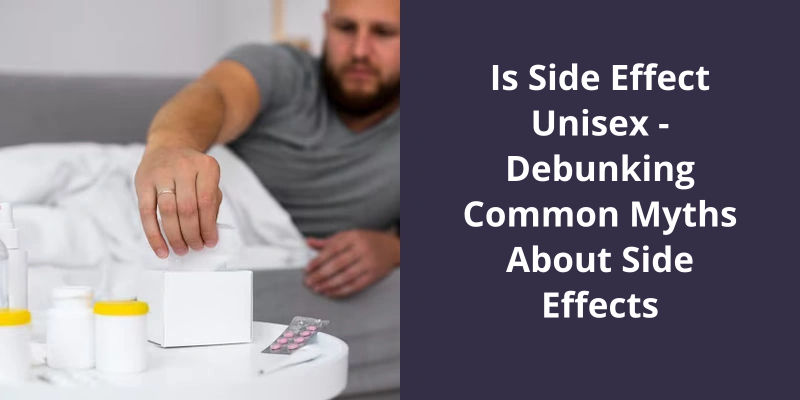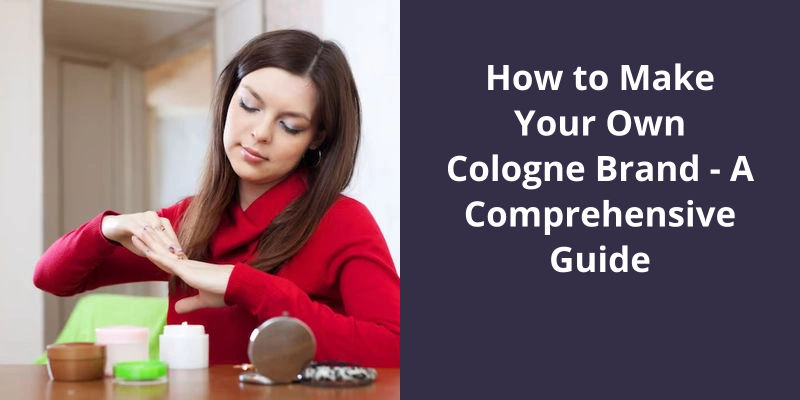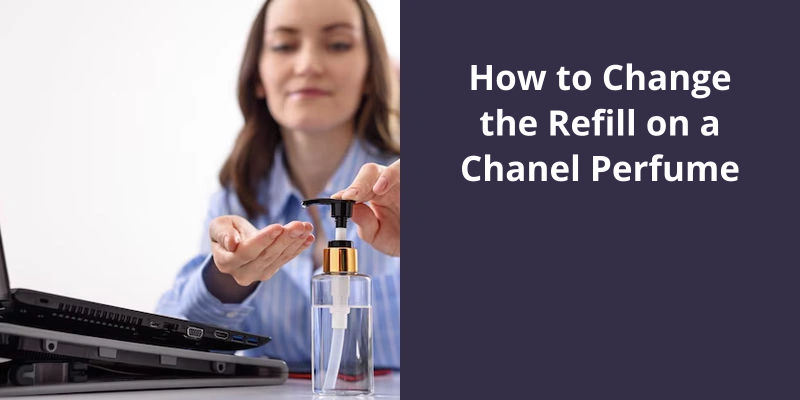When you want to test a perfume, you should spray it onto your inner wrists or the back of your wrists. You can also apply it to other pulse points such as behind your ears, at the base of the throat, inside elbows, and behind your knees. Remember not to rub the area where you’ve applied the perfume as it can disturb the fragrance development. You may also want to give it a few moments to settle on your skin so you can fully appreciate the different notes. Don’t test too many perfumes at once as scent detection can become overly complicated when too many fragrances combine.

Do Perfume Counters Give Free Samples?
Perfume counters are known for their enticing range of scents, inviting customers to explore the world of fragrances. And yes, many perfume counters do offer free samples to potential customers. These samples give you the opportunity to experience the scent firsthand before making a purchase.
When you visit a fragrance counter, you’ll often find open bottles of perfume displayed on the counter. These bottles are meant to be used as testers, allowing customers to smell the various fragrances. Although you cant take these tester bottles home, you can certainly spritz some of the perfume onto a piece of cardboard or blotter provided by the store. This way, you can get a sense of the scent without committing to a purchase.
However, if you’re specifically looking to try a new perfume before buying, you can ask the sales associate for a sample from the sample bottle. This is usually a larger bottle that they use to provide small samples to customers. The sales associate will happily assist you in spraying a small amount of the fragrance on yourself, allowing you to wear it for a while and see how it develops on your skin.
Sampling a fragrance before purchasing is essential, as scents can smell different on different individuals due to unique body chemistry. By trying a sample, you can understand how the perfume interacts with your bodys natural scent and how long it lasts throughout the day.
Now that we understand that perfume testers contain the same high-quality liquid as the original fragrances and can guarantee a long-lasting scent, it’s essential to explore the worthiness of investing in these testers. However, before delving into that, it’s crucial to consider the best practices for maintaining the longevity and quality of our perfumes. Storing them in a cool, moisture-free environment is highly recommended.
Are Perfume Testers Worth It?
When it comes to perfume testers, many people wonder if they’re worth investing in. This means that you can use testers with the same confidence as you’d use your normal perfume.
When it comes to maintaining your fragrances, it’s essential to store them properly. The best way to do this is to keep them in a cool and moisture-free environment. This will help preserve the quality and potency of the fragrance over time. Perfume testers are no different in this regard, so it’s important to store them in the same way you’d store your regular perfume.
They contain the same fragrance as the original bottles and allow you to try out different scents without committing to a full bottle.
How Perfume Testers Are Commonly Used in the Fragrance Industry, Such as for Product Promotion or Sampling Purposes.
- Perfume testers play a crucial role in the fragrance industry by helping to promote products and allow customers to sample different scents.
- They’re commonly used in retail stores, beauty counters, and perfume shops to entice potential buyers.
- These testers are small bottles or vials filled with the actual perfume, allowing customers to smell and experience the fragrance firsthand.
- By providing testers, brands can showcase their product range and help customers make informed purchasing decisions.
- Testers are often displayed on counters or shelves, allowing customers to freely explore and try different scents.
- Some perfume testers come in sample sizes, perfect for customers to take home and try before committing to a full-size bottle.
- Additionally, testers are widely used during promotional events or campaigns to create awareness and generate interest in new fragrances.
- Brands may also distribute testers as part of gift sets or in beauty subscription boxes, further increasing exposure and customer engagement.
- Perfume testers are a cost-effective marketing strategy for fragrance companies, as they allow potential buyers to experience the product without investing in the full-size version.
- Overall, perfume testers serve as valuable tools in the fragrance industry, enabling customers to explore scents and aiding in product promotion and sampling purposes.
Now that we understand the basics of using perfume tester paper, let’s delve into the proper technique for testing a fragrance. After selecting a scent blotter, it’s important to spray the perfume in a downward motion to create a fine mist. Once the fragrance has settled on the blotter, bring it to your nose and take a gentle sniff to fully experience the scent. Additionally, spritzing your wrist can provide a more accurate representation of how the fragrance interacts with your skin chemistry. However, it’s essential to remember to wait for at least 30 minutes before making a final judgment, as fragrances can evolve over time.
How Do You Use Perfume Tester Paper?
When it comes to testing a perfume, it’s important to know the proper methods to ensure you get an accurate representation of it’s scent. One common tool is the scent blotter, those white cardboard strips you often find next to tester bottles on a fragrance counter. To begin, grab one of these blotter papers and hold it about an inch away from the bottles nozzle.
Next, spray a cloud of the perfume in a downward motion above the blotter paper. This method ensures an even distribution of the fragrance onto the strip. It’s important to avoid spraying the perfume directly onto the paper to prevent it from becoming saturated and distorting the scent.
Once you’ve sprayed the perfume, bring the scent strip up to your nose. Take a gentle sniff to get an initial impression of the fragrance. This will allow you to evaluate the top notes, which are the scents that are most noticeable upon application.
Additionally, it’s recommended to spritz the perfume onto your wrist. The warmth of your skin can slightly alter the scent, allowing you to experience the fragrance as it interacts with your body chemistry. Give it a few moments to settle on your skin before smelling it again.
After you’ve tested the fragrance on the scent blotter and your wrist, it’s important to let it develop for at least 30 minutes. During this time, the fragrance will go through different stages known as the top, middle, and base notes. This waiting period allows you to fully experience the scents evolution and determine if it suits your preferences.
By utilizing scent blotter papers, spraying in a downward motion, bringing the strip to your nose, spritzing your wrist, and giving the fragrance time to develop, you can properly test a perfume and make an informed decision on whether it’s the right scent for you. Remember, everyones sense of smell is unique, so take your time to find a fragrance that truly speaks to you.
How to Read and Interpret Perfume Notes in Order to Understand a Fragrance’s Composition
- Top notes: The initial scents that you detect when you first apply the fragrance. They’re usually light, fresh, and fleeting.
- Heart notes: Also known as middle or floral notes, they emerge after the top notes settle. These scents are the core of the fragrance and last longer than the top notes.
- Base notes: The final scents that become more prominent as the fragrance dries down. These notes are often deep, rich, and long-lasting.
- Fragrance families: Different categories that perfumes can be classified into based on common scent characteristics. Examples include floral, woody, oriental, and citrus.
- Accords: Combinations of different notes that create unique scent profiles. They’re used to describe the overall character of a fragrance, such as a fruity-floral accord or a woody-spicy accord.
- Perfume pyramids: Visual representations of a fragrance’s notes, usually organized in a triangle shape. The top, heart, and base notes are depicted along the different levels of the pyramid.
- Sillage: The trail or projection of a perfume. It refers to how far the scent lingers in the air after it’s been applied.
- Longevity: The duration of time that a fragrance remains detectable on the skin. It can vary depending on the concentration and quality of the perfume.
- Note breakdown: A detailed listing of all the individual notes used in a fragrance. This information can help you better understand the composition and identify specific scents in the perfume.
- Perfume terminology: A wide range of terms used in the perfume industry to describe different aspects of fragrance creation, such as accords, notes, perfumers, and perfume concentrations.
Source: Is there anything special about the paper used to sample …
Now that the cap is removed, you can proceed to open the perfume bottle.
Can Perfume Bottles Be Opened?
To access the perfume tester, you need to locate the nozzle or sprayer of the bottle. This is usually located at the top of the bottle, either connected to the cap or directly attached to the bottle. Once the cap is removed, you can proceed to expose the sprayer.
Apply gentle pressure and slowly twist and pull upwards. This should loosen the sprayer and allow you to remove it from the bottle.
If pliers aren’t available, you can also use a pair of nippers or wire cutters. Be cautious not to exert too much force as this may cause damage to the bottle or the sprayer itself.
It’s important to note that opening a sealed perfume bottle may void any return or exchange policies, as it’s considered tampering with the product. Remember to handle the tools with care and always exercise caution when working with delicate items such as perfume bottles.
Tips for Selecting and Buying Perfume Bottles as Gifts
- Consider the recipient’s preferences and tastes
- Research the different types of fragrances available
- Read reviews and ratings from other customers
- Consider the occasion or purpose of the gift
- Look for unique and visually appealing bottle designs
- Consider the quality and durability of the bottle
- Check for any additional features or extras, such as gift sets
- Compare prices and shop around for the best deal
- Ensure proper packaging and delivery to maintain the fragrance’s integrity
- Consider personalized or engraved options for a special touch
Practically speaking, testing perfume on your skin is often limited to just your two wrists. However, exploring different areas of your arm or body might seem tempting, but doing so increases the risk of fragrance contamination between different scents.
Where Do You Test Perfume on Your Body?
When it comes to testing perfume, many people wonder where on their body they should apply it for the best results. While it may seem practical to test on your skin, doing so restricts you to just your two wrists. However, there are other areas you can experiment with to get a better understanding of how a fragrance will interact with your body chemistry.
One option is to spray different parts of your arm. By testing on your inner arm, for example, you can effectively assess how the fragrance develops over time. Additionally, you can try spraying on the back of your hand, which is another commonly suggested spot for perfume testing. This allows you to easily smell your fragrance throughout the day without it interfering with other scents.
Another alternative is to test on different areas of your body, such as your neck or décolletage. These areas are sensitive to scent and the warmth of your skin can enhance the fragrance. However, keep in mind that if you choose to test on multiple body parts, there’s a higher risk of the fragrances contaminating each other, potentially altering the true scent profile.
For a more accurate assessment, you can also spray perfume on fabric. Applying it to a piece of cloth, like a handkerchief or cotton pad, allows for easy comparison between different scents without the interference of body chemistry. This method can also be useful if you want to test multiple fragrances at once without any cross-contamination.
Testing Perfume on Different Parts of the Body: Arms, Legs, Stomach, Etc.
In order to test a perfume, it’s advisable to spray testers on different parts of the body. These areas typically include the arms, legs, stomach, and other pulse points. By applying the perfume on various skin surfaces, you can gauge how it interacts with your body chemistry and how the scent develops over time. Each area of the body may yield different results due to variations in temperature, moisture, and fragrance affinity. It’s important to note that fragrance can also last longer on well-hydrated skin. Therefore, experimenting with different application points can help you determine which areas enhance the perfume’s scent and longevity to find your preferred application style.
Where can I test my cologne smell? Ask at a Department Store. Visit the cologne counter at a department store like Saks, Neiman Marcus, Bloomingdale’s, Macy’s, or Nordstroms to request a fragrance sample. These retailers often offer a wide selection of colognes from various brands, allowing you to test different scents and find the one that suits you best. Their knowledgeable staff will be happy to assist you in exploring the options and providing recommendations based on your preferences. So, head to a department store and discover your signature fragrance today.
Where Can I Test My Cologne Smell?
If youre wondering where to test the smell of your cologne, one of the best places to go is the cologne counter at a department store. These high-end stores, such as Saks, Neiman Marcus, Bloomingdales, Macys, or Nordstroms, typically have a wide selection of fragrances available for customers to try. The sales representatives at these counters are trained to provide assistance and guidance in finding the perfect scent for you.
When you visit the cologne counter, simply ask one of the sales representatives for a fragrance sample. They’ll be more than happy to provide you with a small spray tester that allows you to experience the scent of the cologne firsthand. You can then spray a small amount on your wrist and allow the fragrance to develop over time.
It also allows you to see how the fragrance evolves throughout the day and how long it lasts on your skin.
Dont be afraid to try multiple fragrances during your visit. The cologne counter is there for you to explore different scents and find the one that resonates with you the most. The sales representatives can also provide recommendations based on your preferences, helping you narrow down your choices and find your signature scent.
Conclusion
In conclusion, when it comes to testing perfume, it’s vital to choose a specific spot on your skin to spray the tester. Opting for either the wrist or back of the hand is recommended. This method allows you to gauge the aroma more accurately and make an informed decision about whether the scent suits you or not. So next time you find yourself in possession of a perfume tester, remember to follow these steps and indulge in the olfactory experience that awaits you.





